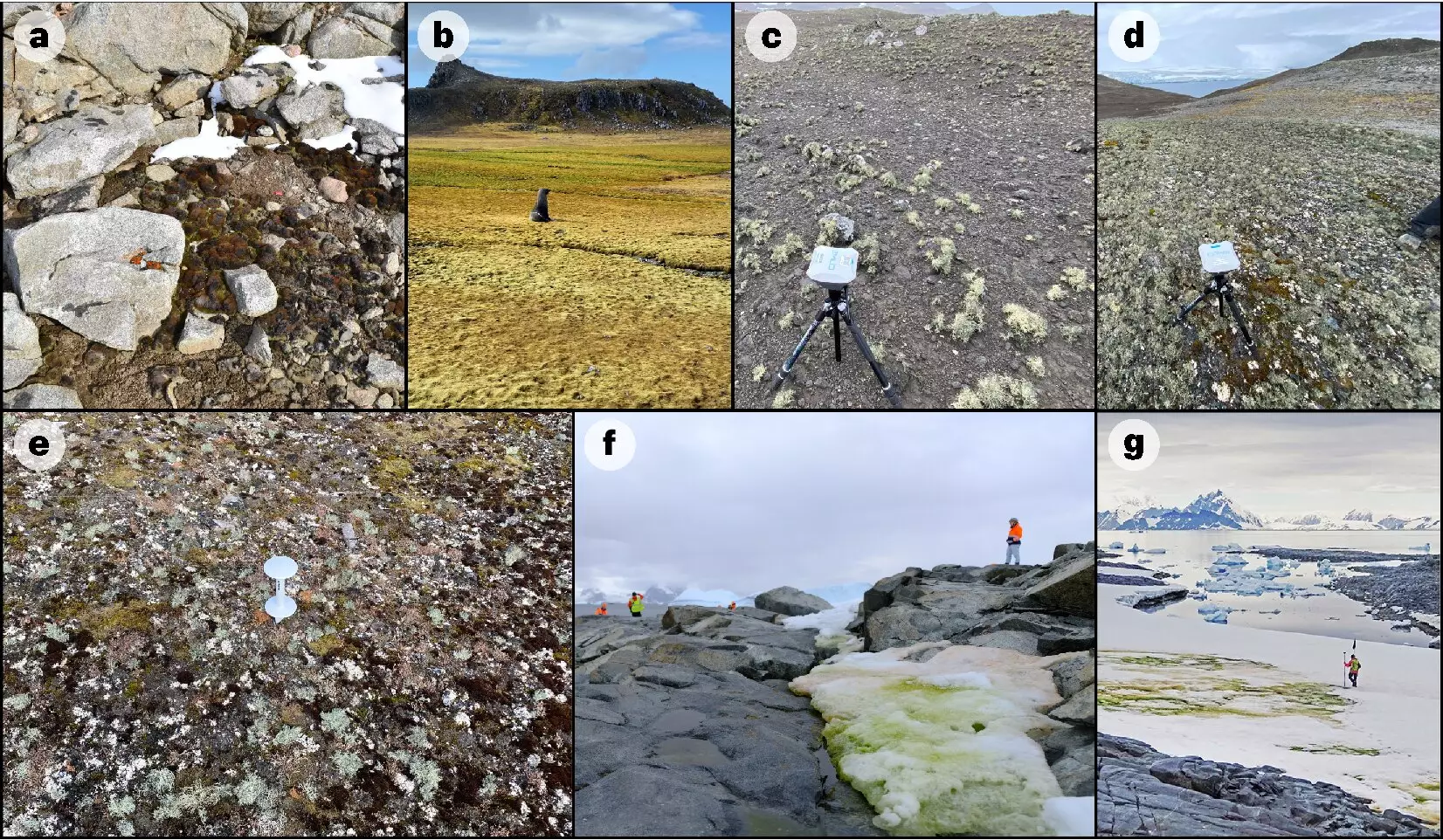The vast, icy expanse of Antarctica has long been a subject of intrigue for scientists across the globe. For years, researchers have struggled to get a complete picture of the plant life in this remote region, until now. A groundbreaking study, published in the prestigious journal *Nature Geoscience*, has managed to map the continent’s greenery comprehensively for the first time. This research, led by the University of Edinburgh, lays crucial groundwork to understand how the Antarctic ecosystem responds to climate change and establishes a valuable reference point for conservation efforts.
Utilizing sophisticated satellite technology from the European Space Agency, paired with extensive fieldwork conducted over multiple summer seasons, the scientists embarked on an ambitious project to survey Austral plant life. They meticulously cataloged a variety of mosses, lichens, and algae, revealing approximately 45 square kilometers of vegetation—an area nearly three times the size of Lake Windermere in the UK. This newly gleaned information serves as a benchmark for tracking changes in plant life as the climate continues to evolve.
The research team comprised an international alliance, featuring institutions such as the Norwegian Institute for Nature Research and the British Antarctic Survey, showcasing a collaborative spirit that is essential for grasping the complexity of ecological studies in extreme conditions. By combining advanced remote sensing technology with on-the-ground observations, they effectively maximized their data collection methods, offering insight into vegetation types that have previously gone unnoticed.
A Surprising Discover: The Concentration of Vegetation
The study underscored a significant finding: over 80% of the mapped vegetation was densely concentrated within the Antarctic Peninsula and surrounding islands. Interestingly, this growth accounts for just 0.12% of the entire ice-free area in Antarctica, calling into question the adequacy of current protective measures under the Antarctic Specially Protected Area (ASPA) system. Experts are sounding the alarm, suggesting that crucial habitats may be vulnerable to the consequences of climate change and human activity.
This distribution sheds light on the adaptation mechanisms that allow these resilient organisms to flourish in one of the most inhospitable environments on Earth. The vegetation, chiefly composed of mosses and lichens, is integral to local carbon and nutrient recycling processes, which have vital implications for the entire Antarctic ecosystem.
Antarctic vegetation has demonstrated significant sensitivity to environmental changes, rendering it a foremost indicator of climate impact. The status of these hardy organisms can reflect broader shifts in the region’s climate, offering critical insights into how other delicate ecosystems worldwide, such as the Arctic, might react under similar pressures. Scientists highlight the need for extended monitoring of vegetation in Antarctica in order to build a more complete understanding of global climate dynamics.
As Dr. Claudia Colesie aptly points out, knowing where resilient species thrive enables targeted conservation initiatives. It is imperative for scientists and policymakers alike to recognize and address the delicate balance within these fragile ecosystems. This newly established map serves as a vital reference guide for future conservation efforts, aiming to ensure the survival of these crucial plant species.
Future Implications for Conservation and Research
The advent of this vegetation mapping presents significant implications for both ongoing and future conservation strategies. As Dr. Andrew Gray emphasizes, employing remote sensing technologies offers a low-impact means to study and monitor Antarctic ecosystems. Consequently, this method will enable researchers to assess ecological changes over time while minimizing human disturbance to these pristine environments.
The optimistic results of this study, particularly the discovery of previously uncharted vegetation areas, herald a new era of ecological research in Antarctica. By providing a deeper understanding of vegetation distribution and its potential vulnerability to climate change, scientists can better allocate resources and direct conservation efforts toward the most critical areas that warrant protection.
This pioneering continent-wide mapping study not only enriches our understanding of Antarctica’s ecological landscape but also emphasizes the urgent need for strategic conservation. As climate change continues to challenge the endurance of such unique organisms, it is pivotal that we safeguard these resilient lifeforms and their habitats. The research provides an invaluable baseline that future scientists can build upon to ensure that these crucial ecosystems not only survive but thrive in the increasingly uncertain climate landscape.

